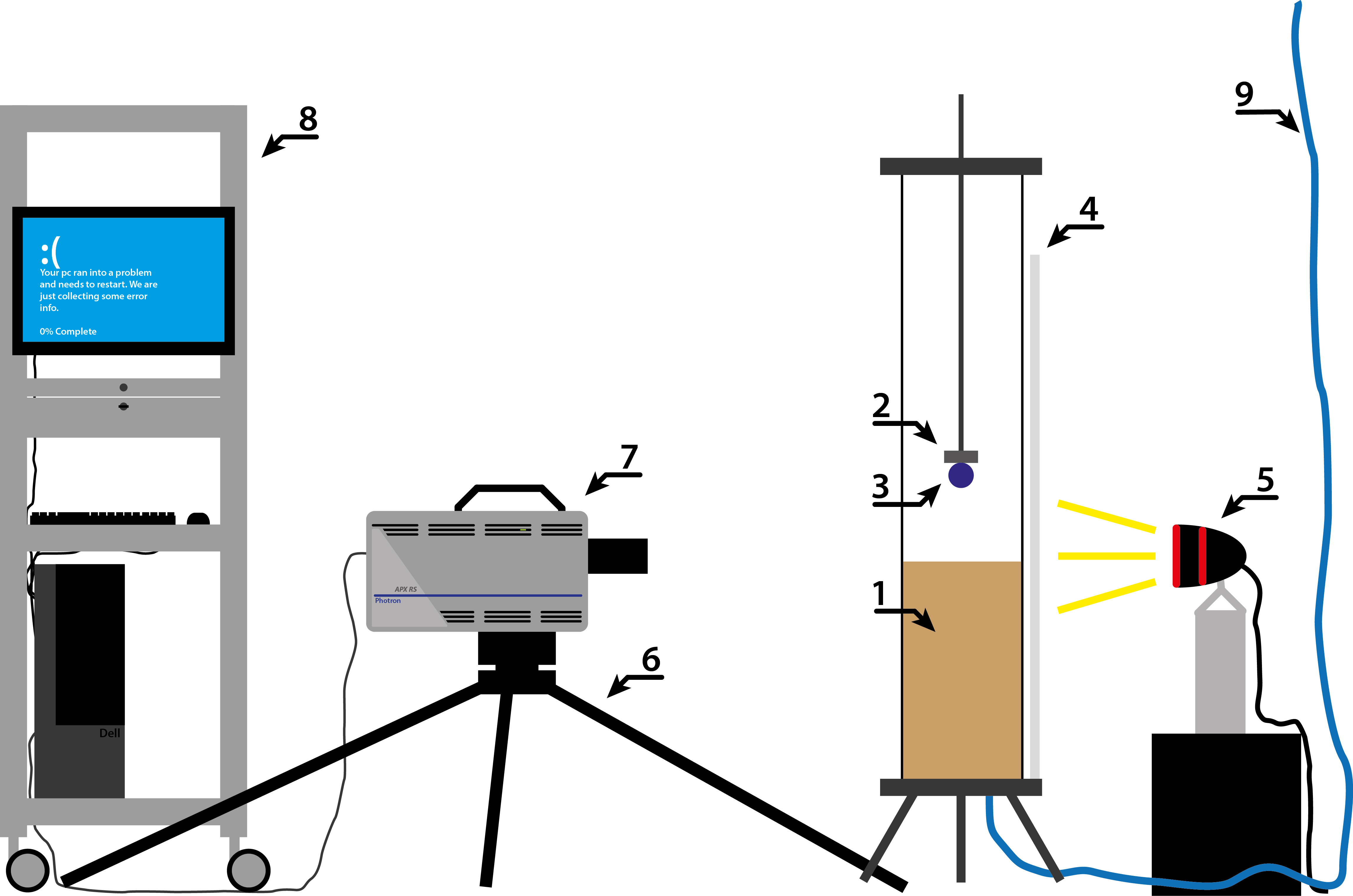We conducted our experiment with the following method as described below.
A high speed camera is used to capture the impact of a metal ball on the surface of sand. The high speed camera is attached on a tripod and put in front of the cylinder with sand. Corresponding software on a computer is used to record the impact of the ball on the surface.
The ball is attached to a rod with a magnet on the bottom. The magnet can be switched on and of, so the ball can be released. Light sources are used to capture the impact of the ball at more frames per second. The cylinder is illuminated from behind, with light diffusers in between the light sources and the cylinder.
We first tested a little bit how the set-up works, just to figure out how we should measure everything. During this testing it occured that sometimes the jet had so much power that the jet would bump into the magnet. This would result in us not being enabled to measure the correct height of the jet. To avoid this problem, the rod is taken out of the cylinder just as the ball is released. This way, the jet can reach its full height. In the video to the right is displayed what happens when the magnet isn't removed from the cylinder.
When investigating the height of the jet as function of the impact velocity of the ball, the releasing height of the ball is varied. The height of the rod relative to the surface of the sand can be adjusted manually. The velocity of the ball and the height of the jet is measured by analyzing the high speed camera footage.
When the influence of the packing fraction on the height of the jet is investigated, air is led into the bottom of the cylinder, reducing the packing fraction. This results in bubbles of air emerging on the surface. The presence of air bubbles distorts the effect of the the impact of the ball on the surface. Therefore, the air inlet is closed slowly, so no more bubbles emerge on the surface, but the packing fraction is still reduced.
The equipment we needed to properly execute the practical is:
- Fastcam APX RS Photron high speed camera
- Tripod
- Light sources
- Light diffusers
- Computer with high speed camera software
- Cylinder with sand
- Magnet which can be switched on and off
- Metal ball
A schematic representation of the set-up that we worked with is given below in the picture:
